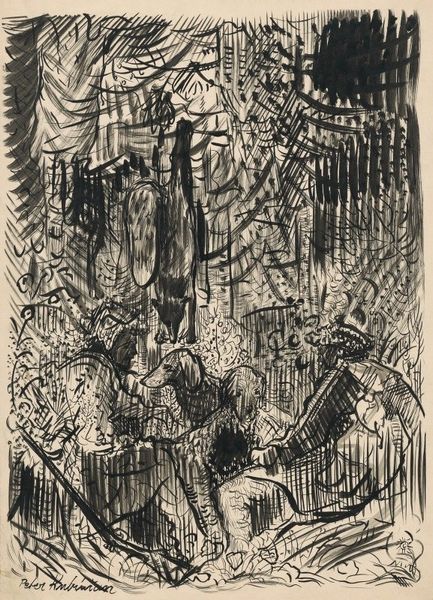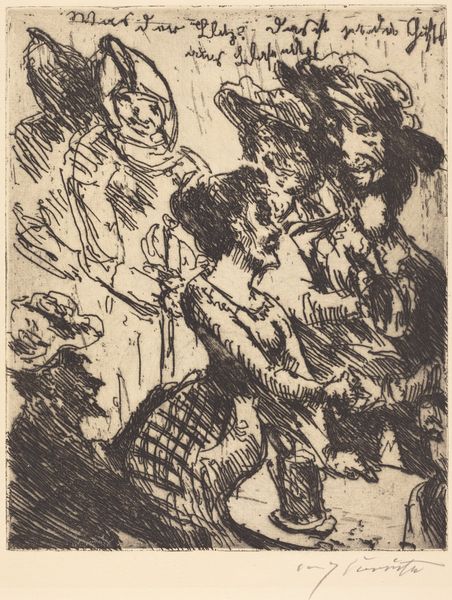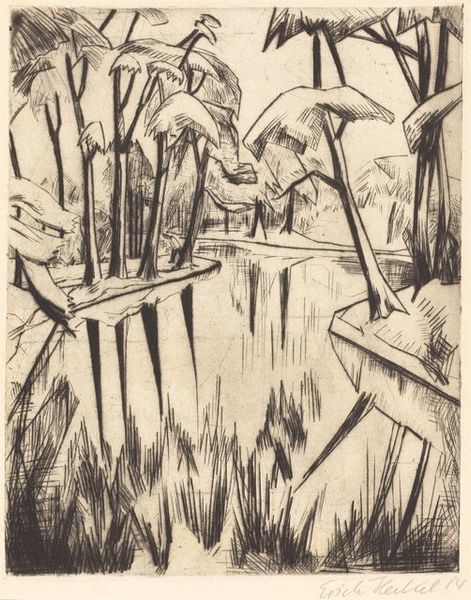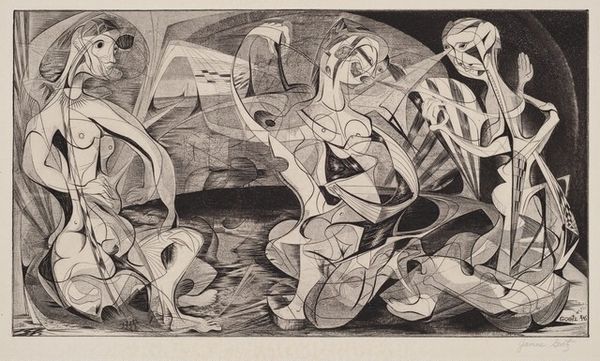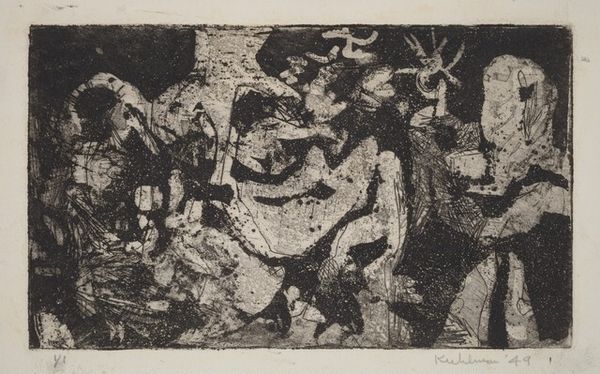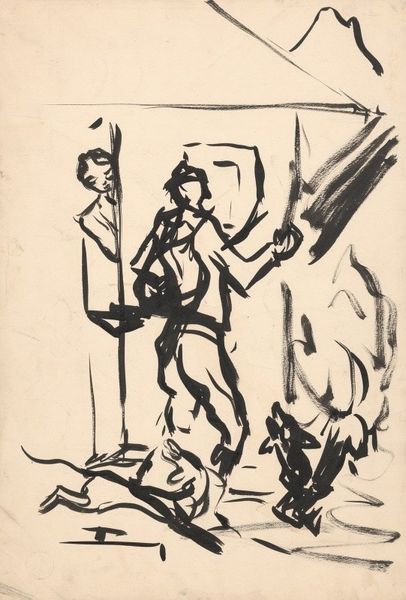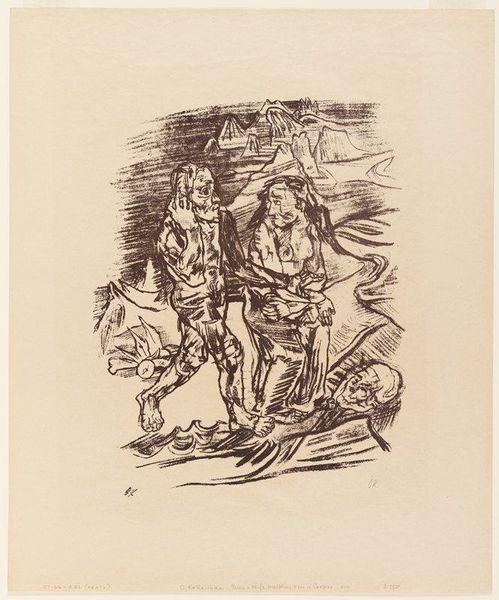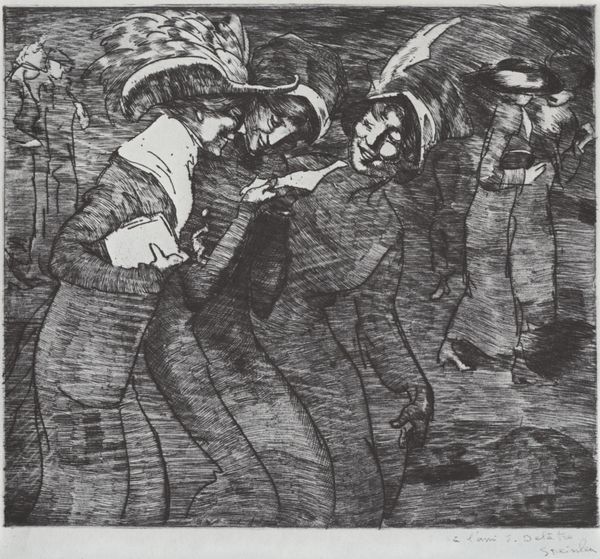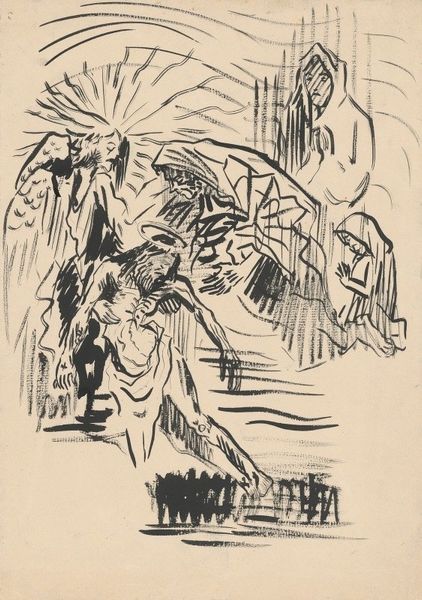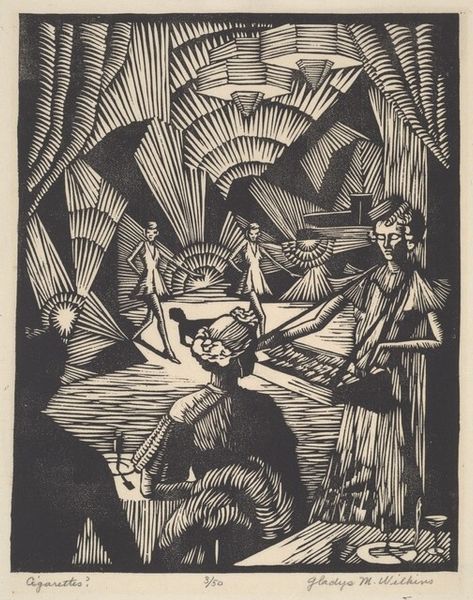
drawing, ink, pen
#
drawing
#
ink drawing
#
narrative-art
#
pen drawing
#
pen illustration
#
pen sketch
#
german-expressionism
#
figuration
#
ink
#
pen
#
cityscape
Dimensions: sheet: 45.2 × 54.5 cm (17 13/16 × 21 7/16 in.)
Copyright: National Gallery of Art: CC0 1.0
Curator: Woah, the intensity of the line work is just seething. It's like looking at a charcoal drawing after a thunderstorm, charged and ominous! Editor: Absolutely. Let’s ground ourselves. We're looking at "The Move" by Ludwig Meidner, a drawing in ink and pen from 1915. As a German Expressionist piece, it's rife with commentary on the anxieties of pre-war Europe. Curator: Anxieties is putting it mildly! That shadowy figure looming above the cityscape? And the panicked figures scrambling through the streets, dwarfed by the chaotic architecture? It feels viscerally prophetic. It is so busy that your eyes can’t find a spot to focus on for long. Editor: Precisely. Meidner, part of the "Novembergruppe," often portrayed urban landscapes as sites of social and political upheaval. Here, he’s depicting a scene of mass migration, a consequence of increasing social unrest. The figures almost seem swallowed up by the urban chaos. Curator: Swallowed, yes! Like Jonah in the belly of a whale. You can feel the disorientation; you are at the mercy of external forces that are about to tear the very earth beneath your feet. Those swirling, almost violent pen strokes above feel like fate itself, crashing down upon them. Editor: Right, that connects to the philosophy of the time, existentialism, and a deep distrust in societal structures. Migration often disproportionately affects vulnerable populations, rendering them further marginalized and exposed. This work reminds me of Walter Benjamin's thoughts on the "storm of progress." Curator: Well, that’s thoroughly depressing but illuminating. So what's the takeaway, then? Are we doomed to forever cart our meager possessions through nightmarish cityscapes? Editor: Not necessarily. But the piece does compel us to consider how historical power structures and social inequities influence human mobility and individual lives. Also how war has always a bigger reach and consequence that one could ever be prepared to embrace. Art like this asks us to become responsible witnesses. Curator: Responsible witnesses. I like that. Even through all that ink and chaos, we can still see a little bit of ourselves. I will give you that. Editor: And perhaps that shared vulnerability, which becomes particularly present in the reality we live today, and especially because of these pieces, offers a chance to connect.
Comments
No comments
Be the first to comment and join the conversation on the ultimate creative platform.

